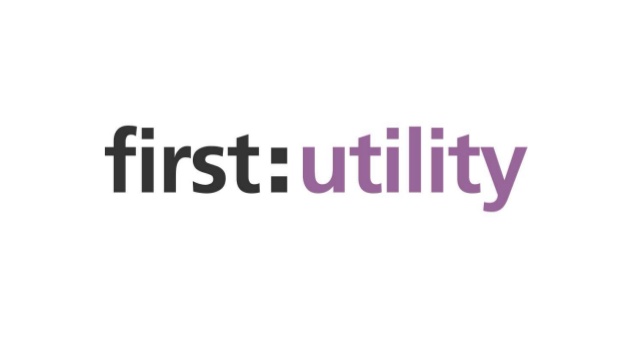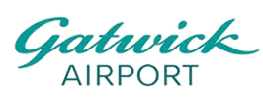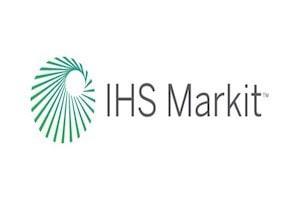Here at Sirius, we often get asked, "How does Wazuh stack up against commercial giants like Splunk, Elastic, or CrowdStrike?" This is a very good question, and one that deserves a clear, honest answer. We understand that before making a major technology decision, buyers are fascinated with comparisons and naturally research multiple options to find the best fit.
We want to be upfront: Wazuh is a powerful Open Source security platform available at zero licensing cost, offering a compelling unified Extended Detection and Response (XDR) and Security Information and Event Management (SIEM) solution. However, adopting Wazuh involves accepting operational and architectural trade-offs compared to proprietary solutions. For certain organizational needs—particularly maximum detection efficacy or high out-of-the-box maturity—a proprietary alternative may, in fact, offer superior value.
This article will honestly and transparently compare Wazuh against its major competitors, explaining the factors that drive architectural choice and Total Cost of Ownership (TCO) up or down, helping you decide what is best for your specific needs. We aim to be fiercely transparent, allowing you to make the most informed decision possible.
I. Strategic Context and Economic Model Comparison
Wazuh holds a unique market position by combining SIEM and XDR functionalities into a single, open-source platform. This dual role places it in competition with distinct groups of commercial vendors, summarized by their foundational economic models.
1. Cost Model Divergence: Licensing vs. Labor
The fundamental economic comparison of security platforms centers on the structure of cost accumulation.
| Model Priority | Wazuh (FOSS/Cloud) | Splunk ES (Proprietary) | Elastic Security (Open-Core) |
|---|---|---|---|
| Licensing | $0 licensing cost for the core platform. Vendor recovery via managed cloud hosting and SLA-based support. | Proprietary; heavily dependent on data volume (GB/day ingestion). | Open-core strategy; free base components, proprietary licenses required for essential enterprise features, advanced ML, or full support. |
| Cost Predictability | High predictability through agent-based pricing in the Cloud service. | Low predictability; costs escalate steeply with data growth or spikes. | Variable, based on proprietary feature adoption and resource utilization. |
| TCO Structure | TCO shifts entirely to specialized labor, expertise, and infrastructure management (OpEx). | TCO dominated by high, unpredictable licensing fees. | TCO includes infrastructure plus proprietary license fees. |
The greatest financial error in evaluating Wazuh is equating its zero licensing cost with a zero-cost operation. For a self-managed deployment, the absence of a license fee converts a Capital Expenditure (CapEx) into a substantial Operational Expenditure (OpEx) dominated by the cost of specialized labor and expertise. Most mid-sized organizations find a necessity for formal, paid commercial engagement, with a median annual expenditure of $16,234 observed for support services alone.
2. Operational Overhead Comparison
The Total Cost of Ownership analysis confirms that the decision to adopt Wazuh hinges on an organization's internal technical capacity.
Ease of Deployment/Evaluation: Wazuh is consistently rated higher than proprietary counterparts (like Splunk Enterprise and QRadar) for being easier to integrate, deploy, and evaluate. The low friction allows teams to rapidly prototype without lengthy procurement cycles and financial commitment.
Complexity at Scale: While easy to start, Wazuh is characterized by a steep and difficult learning curve required for operational mastery, particularly for scaling and configuration. This complexity is the greatest cost multiplier for self-managed Wazuh. In contrast, proprietary vendors (like CrowdStrike) generally provide polished UIs and comprehensive vendor support to reduce constant deep system configuration.
II. Functional Comparison: Detection Efficacy vs. Customization
A fundamental strategic trade-off exists between Wazuh’s customization flexibility and the detection efficacy of proprietary specialists.
1. Host Security and Compliance Strength (Wazuh vs. Traditional SIEM)
Wazuh retains a native focus on endpoint security and excels in host security baseline functions.
Wazuh Strength: Wazuh integrates in-built File Integrity Monitoring (FIM) and Security Configuration Assessment (SCA) capabilities. This FIM provides granular alerting and superior control over sensitive assets. The SCA feature directly supports regulatory compliance efforts by assessing systems against industry guidelines like the Center for Internet Security (CIS) benchmark.
Traditional SIEM Weakness: Traditional proprietary SIEM systems, such as IBM QRadar or ArcSight, typically require external modules or third-party tools to replicate this level of granular FIM, increasing complexity and OpEx.
For organizations where the primary mandate is satisfying audit requirements and minimizing configuration drift (PCI-DSS, HIPAA, NIST), Wazuh’s native compliance-centric capabilities offer superior control and economic advantages.
2. XDR/EDR Detection Methodology Comparison
Wazuh’s detection relies on customizable, rule-based behavioral analysis and log data analysis. This fundamentally diverges from the methods used by specialized proprietary rivals.
Proprietary Efficacy (Endpoint Titans): Proprietary XDR specialists (like CrowdStrike Falcon) achieve superior raw efficacy in identifying emergent threats. Review data indicates that CrowdStrike outperforms Wazuh in real-time detection (9.6 vs. 8.5) and automated remediation (9.1 vs. 8.9). These proprietary platforms rely on high-fidelity, AI/ML-driven Indicators of Attack (IOA).
Commercial SIEM Features (Ingestion Giants): Splunk Enterprise Security (ES) utilizes features like Risk-Based Alerting (RBA), integrated Security Orchestration, Automation, and Response (SOAR) capabilities, and User and Entity Behavior Analytics (UEBA), often supported by an AI Assistant to accelerate investigation. Elastic Defend also offers a modern EDR stack featuring ML-powered protection and kernel-level sensors.
Wazuh Trade-off: Wazuh offers unparalleled customization and control over detection rules. However, sustaining a high-level security posture against sophisticated, unknown threats requires substantial, continuous investment in specialized internal labor to configure and tune the rule set, as it relies on pattern recognition rather than automated ML analysis.
Organizations whose primary goals are minimizing operational overhead and leveraging advanced detection techniques (AI/ML correlation or kernel-level protection) should strongly consider commercial solutions.
III. Architectural and Integration Differences
Architectural design dictates performance, scalability, and maintenance requirements.
1. Data Indexing Methodology
The architectural choice of the data layer creates a divergence in how data is processed.
Wazuh's Schema-on-Write: Wazuh and Elastic environments rely on the OpenSearch Indexer, which utilizes a schema-on-write methodology. This requires careful upfront data parsing and normalization (via the Manager's decoders or external tools like Logstash) to ensure data is structured before indexing. This approach results in highly efficient search and storage for structured data.
Splunk's Schema-on-Read: Splunk is known for its proprietary Search Processing Language (SPL) and schema-on-read capability. This allows massive amounts of unstructured machine data to be ingested instantaneously, applying the structure (schema) dynamically at the moment of search. This offers high flexibility for ad-hoc analysis but can lead to greater CPU utilization and cost during complex queries.
2. Integration and Latency
Wazuh 4.6 and later discontinued native plugins for proprietary SIEMs (like Splunk and Elastic), requiring the use of data forwarders (e.g., Logstash or Splunk Forwarder) instead. These forwarders query the Wazuh indexer or alert file periodically. This architecture, based on periodic polling, introduces an inherent, configurable latency in alert propagation. While sufficient for compliance logging, this latency may compromise real-time XDR workflows that demand immediate, cross-platform data correlation.
IV. Strategic Decision Matrix: Wazuh Versus Key Commercial Rivals
The strategic decision for adopting Wazuh should be rooted in a rigorous TCO analysis that explicitly forecasts internal labor costs versus predictable outsourced service fees or high proprietary licensing costs.
| Decision Criterion | Wazuh (Open-Source) | Elastic Security (Open-Core) | Splunk ES (Proprietary) | CrowdStrike (Proprietary EDR) |
|---|---|---|---|---|
| Cost Model Priority | TCO Predictability (Agent count) or $0 Licensing | Resource-based Efficiency/Scalability | Feature Maturity / High Volume Ingestion | Efficacy / Managed Service |
| Primary Functional Strength | FIM, SCA, Compliance, HIDS | Scalable Data Analytics, Modern SIEM/XDR | Enterprise-Grade SIEM, RBA, SOAR | ML-Driven Endpoint Protection/IOA |
| Ease of Deployment/Evaluation | High (Low friction to start) | Moderate | Low (High upfront commitment) | High (SaaS/Agent install) |
| Complexity at Scale | High (Labor intensive, steep learning curve) | High (Cluster management) | Moderate (Requires specialized SPL expertise) | Low (Managed by vendor) |
| Detection Fidelity (Emergent Threats) | Good (Rule-based, requires tuning) | Very Good (ML-enhanced) | Very Good (AI Assistant, UEBA) | Excellent (AI/ML IOA focused) |
V. Strategic Conclusions and Ideal Use Cases
The final decision is an assessment of whether the cost of internal engineering time is best spent maintaining infrastructure or focusing on core security tasks.
1. When Wazuh is the Optimal Choice
Wazuh is optimally deployed when customization, compliance control, and low upfront friction are prioritized:
High-Expertise, Resource-Constrained Environments: Organizations with skilled security engineers (experienced Linux/OpenSearch administrators) who can manage the labor-intensive complexity to capitalize on the $0 licensing cost.
Compliance-Driven Organizations: Businesses where regulatory requirements for visibility, configuration control, FIM, and SCA are paramount, leveraging Wazuh’s native strengths in host integrity and customizable compliance reporting.
SMEs Requiring Cost Predictability: Smaller enterprises that prioritize budget stability can achieve enterprise-grade security using the agent-based Wazuh Cloud service ($571/month for 100 agents), eliminating the unpredictability of Splunk's volume-based licensing.
2. When Commercial Alternatives Offer Superior Value
Commercial platforms provide superior value when simplicity, guaranteed support, and detection efficacy outweigh the benefits of customization:
Prioritized EDR Efficacy: Organizations needing best-in-class, ML-driven detection, malware prevention, and proactive threat hunting capabilities should select proprietary EDR/XDR platforms such as CrowdStrike Falcon, which offer superior real-time efficacy scores against emergent threats.
Mandatory High-Availability Support: Enterprises requiring strict Service Level Agreements (SLAs) and guaranteed 24/7 vendor support for immediate critical response should utilize the structured support tiers offered by commercial vendors.
Non-Technical Security Operations: Teams needing a low-friction operational experience with out-of-the-box automation (SOAR) and polished user interfaces will find proprietary solutions easier to operate and maintain, reducing the steep learning curve required by Wazuh.
















































